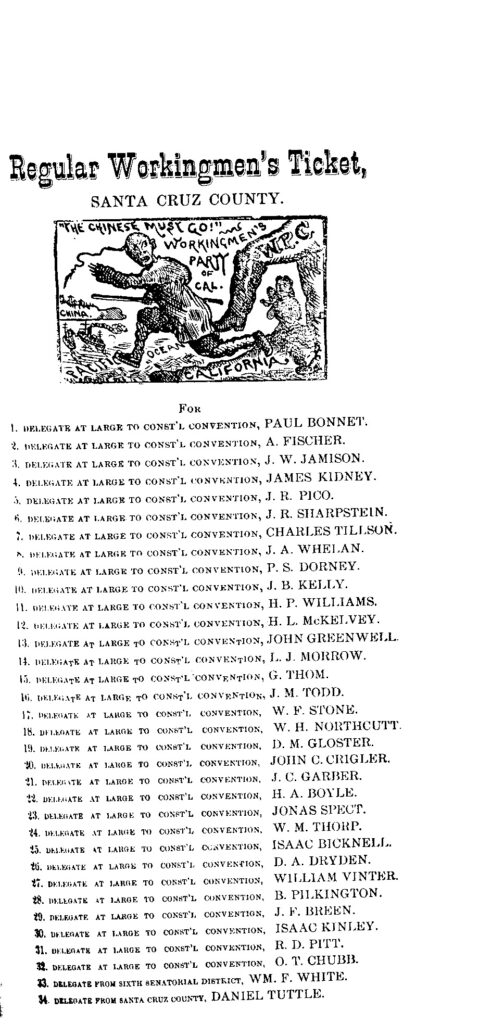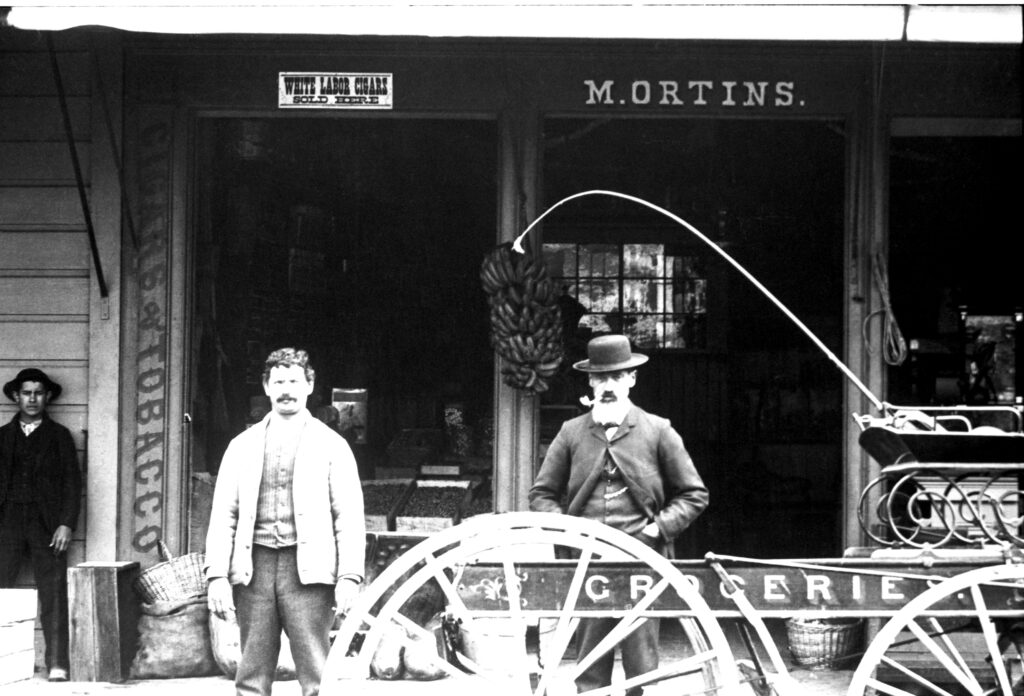Anti-Chinese Movements

Heightened in the late 19th century these movements reflected national trends. They were part of a broader anti-Chinese sentiment across the Western United States. The Chinese Exclusion Act was passed in 1882 and prohibited all immigration of Chinese laborers. Local non-Chinese laborers and businesses often boycotted Chinese establishments and episodes of violence and threats towards the Chinese community also occurred, including raids and evictions. Additionally, influential local figures and newspapers campaigned against the Chinese presence in Santa Cruz, often inflaming public sentiment. This led to the formation of Chinatowns as safe havens against widespread hostility. Anti-Chinese activities eventually waned in the early to mid-20th century due to changes in local economies and decreasing Chinese populations.

Today and the Future.
Although anti-Chinese rhetoric is no longer as widely accepted or expressed, anti-Chinese acts and sentiment still persist both in Santa Cruz and across the country. In 2021, Asian American residents of Santa Cruz gathered at the courthouse to honor the victims of a recent shooting that targeted Asian women. Incidents of anti-Chinese hate were reported across Santa Cruz during this time period.
By Flex Kids Culture.
